
The second episode of this series will focus on Suzhou, the "City of Crafts and Folk Art". This world-class "name card" awarded by UNESCO has further promoted the development of Suzhou, which is known as "Heaven on Earth". How did the thousand-year-old city of Suzhou, a famous historical and cultural city, a popular tourist destination, a rapidly growing economy, a city with splendid culture and frequent people-to-people exchanges, a city with so many "titles" — successfully join the "UNESCO Creative Cities Network (UCCN)" ? How does it show the world its delicate, elegant and highly creative crafts and folk art? How will it tell the world amazing stories with "Suzhou characteristics"? Today, ICCSD will give you all the answers!
Overview: Thousands of Years of Elegance in Suzhou Creates Hundreds of Forms of Crafts in China
Traditional Crafts: Woodcut New Year Paintings and Suzhou Embroidery — The Intangible Cultural Heritage of Magical Suzhou Craftsmanship
Special Event: Telling the Stories of Suzhou through Folk Art
Construction of the City of Crafts and Folk Art: Proper Utilization amid Dynamic Inheritance Injects New Life into Traditional Crafts
On November 28, 2014, in a letter to Zhou Naixiang, the Mayor of Suzhou, the former Director-General of UNESCO Irina Bokova wrote: "I have decided to approve Suzhou to join the UNESCO Creative Cities Network and become 'the City of Crafts and Folk Art'." On December 1, 2014, UNESCO made an official announcement on this decision, making Suzhou truly become the City of Crafts and Folk Art of the UCCN, adding another world-class name card for Suzhou. Winning this world-class honor indicates that Suzhou's crafts and folk art as well as the related cultural and creative industries enjoy a high level of development, and highlights the high-quality growth of Suzhou.
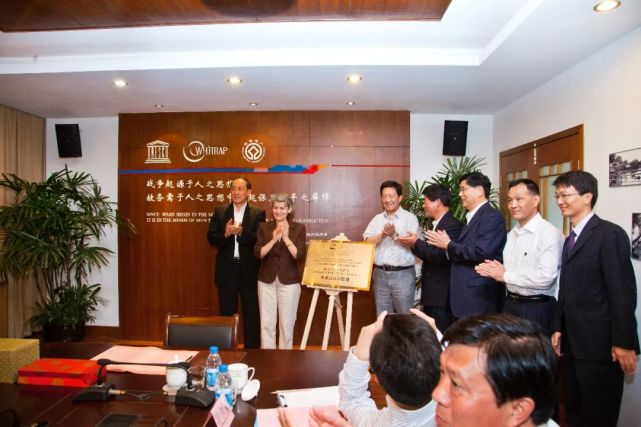
Former Director-General of UNESCO Irina Bokova inaugurates Traditional Architecture Conservation Union of World Heritage Institute of Training and Research for the Asia and the Pacific Region under the auspices of UNESCO (WHITRAP). (Photo via Gusu Evening News)

Former Director-General of UNESCO Irina Bokova inscribes the words "Let Suzhou experience be shared with the world" for the Suzhou Branch of WHITRAP. (Photo via Gusu Evening News)
Suzhou also has a long history of relations with UNESCO and world heritage. As early as 2008, the Suzhou Branch of WHITRAP was set up. It is dedicated to the training and research on the restoration techniques for world heritage ancient architecture and education of young people about world heritage. In 2012, WHITRAP Traditional Architecture Conservation Union and Research Institute was established in Suzhou. During her special trip to Suzhou to visit WHITRAP, Irina Bokova spoke highly of Suzhou's achievements in historical and cultural heritage conservation and research and inscribed the words "Let Suzhou's experience be shared with the world".
Thousands of Years of Elegance in Suzhou Creates Hundreds of Forms of Crafts in China
Suzhou has been a city with beautiful scenery and great talent pools since ancient times. It was the economic and cultural center of south China as early as 4,000 years ago. It was also one of China’s first 24 famous historical and cultural cities. Suzhou enjoys a long history of craft development. It is one of the most important centers of folk crafts in China and boasts a wide range of categories in handicrafts. Among the 11 categories of arts and crafts in China, Suzhou has more than 3,000 varieties in 10 categories. It also has 6 items included in UNESCO's Representative List of the Intangible Cultural Heritage of Humanity and 29 items on China's Representative List of State-Level Intangible Cultural Heritage. 18 of them are folk crafts, ranking among the best in China. Many crafts and folk art, such as Suzhou Embroidery, Song Brocade and K'o-ssu, have been included in China's State-Level Intangible Cultural Heritage and are well-known around the country and even the world. For example, Song Brocade, an intangible cultural heritage item that has shown the charm of new Chinese-style outfits on major international occasions such as the APEC meeting and G20 summit, is a new attempt of Suzhou craftsmanship in the field of fashion and design.
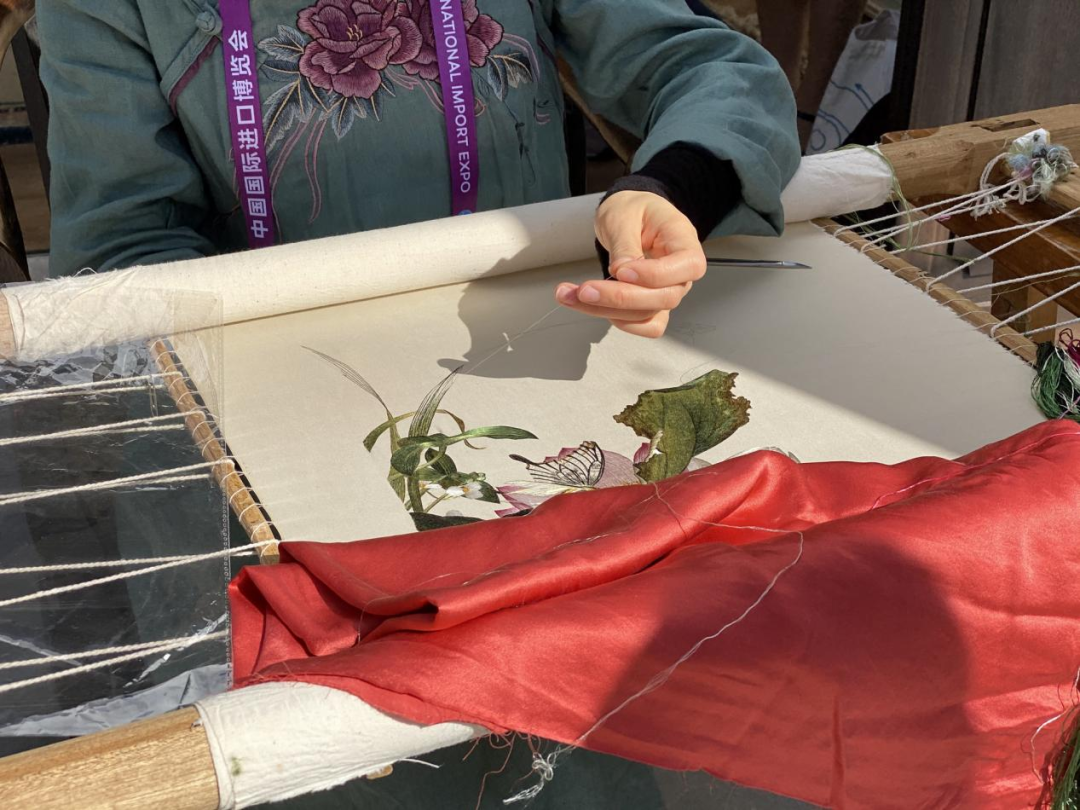
As a fast-growing city in China, Suzhou fully leverages its own strengths represented by abundant resources and at the same time continuously strengthens comprehensive development of cultural and creative industries. The fact that Suzhou has successfully joined the UCCN and become the "City of Crafts and Folk Art" speaks volume about the international recognition of Suzhou's efforts in recent years to promote the preservation of intangible cultural heritage and vigorously develop cultural and creative industries.
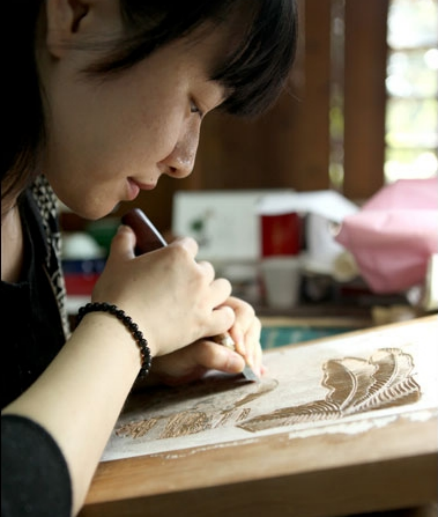
Making a wood-cut New Year painting (Photo via China Intangible Cultural Heritage Protection Center)
Woodcut New Year Paintings and Suzhou Embroidery — The Intangible Cultural Heritage of Magical Suzhou Craftsmanship
Nature has created the idyllic scenery south of the Yangtze River in China, and the people here have cultivated the folk art in Suzhou. As generations of skilled craftsmen and craftswomen are carrying forward the spirit of pursuing excellence to create numerous vivid and lively works of art with their wisdom and love, the cultural chapters of Suzhou are written down to highlight this famous historical and cultural city and the city of crafts.
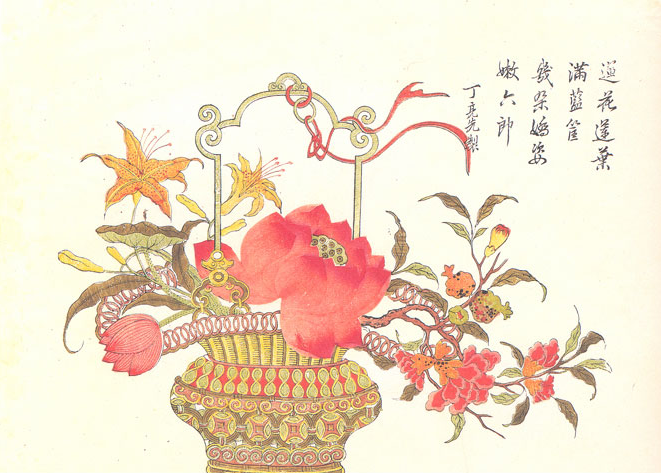
Woodcut New Year Painting (Photo via China Intangible Cultural Heritage Protection Center)
Taohuawu is located in the north of Suzhou, Jiangsu Province. The woodcut New Year paintings in Taohuawu originated from the engraving and printing process in the Song Dynasty. They evolved from embroidered images and developed into a folk art genre in the Ming Dynasty before culminating in the Qing Dynasty. Due to the neat and delicate engraving and the rich decorative effect, Taohuawu Woodcut New Year Paintings are extremely popular with more than one million items produced every year. On May 20, 2006, it was approved by China's State Council to be included in the first batch of state-level intangible cultural heritage items.
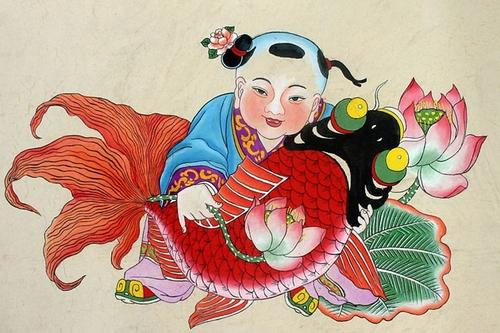
Most patterns used in Taohuawu woodcuts are symmetrical, luxuriant and colorful. The carving technique, color employment and pictorial images highlight the exquisite and elegant folk art style south of the Yangtze River. Themed mainly on folk stories, folk life, flowers, birds, insects and fish, the paintings are often presented in purple and red. They often feature auspicious and joyful scenes, which are closely related to local folk customs, reflecting people's good wishes for life. In the past, every household in Suzhou would put up a Taohuawu New Year painting during the Spring Festival to symbolize good wishes.
As an old saying goes, "There is a paradise above and a Suzhou and Hangzhou below." In addition to Taohuawu Woodcut New Year Paintings, Suzhou Embroidery, Song Brocade, Suzhou Fans and Paper-Cutting are also representative of Suzhou's indigenous crafts.
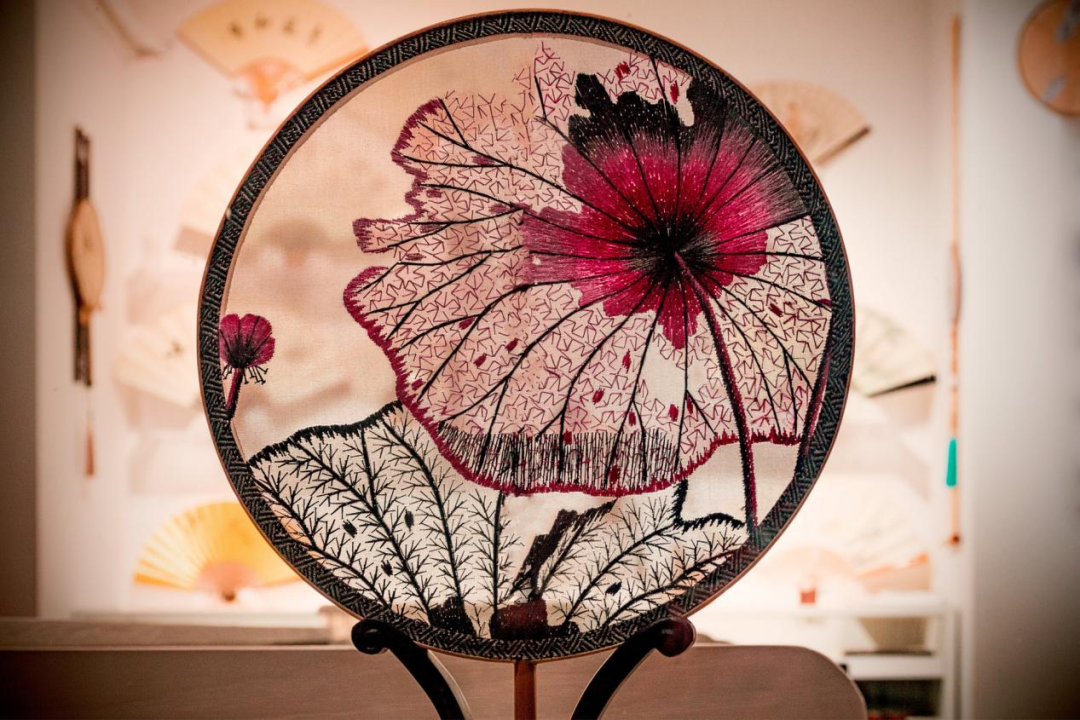
Suzhou Embroidery
Over the past more than 2,000 years, household embroidery workshops have flourished with almost everyone learning embroidery techniques in the ancient city of Suzhou. As the general name for embroidery products in Suzhou and areas around, Suzhou Embroidery is one of the four famous embroideries in China. Suzhou Embroidery is unique and features beautiful patterns, marvelous design, meticulous embroidery, lively stitches and elegant colors, while the embroidery techniques are characterized by "flatness, neatness, color matching, splendor, smoothness, and evenness". The new stitching techniques such as dot stitch, large messy stitch, small messy stitch and overlapping stitch allow Suzhou Embroidery to perfectly integrate light and shadows in different silk thread arrangement. The interweaving of these threads completed by one small needle is truly amazing.
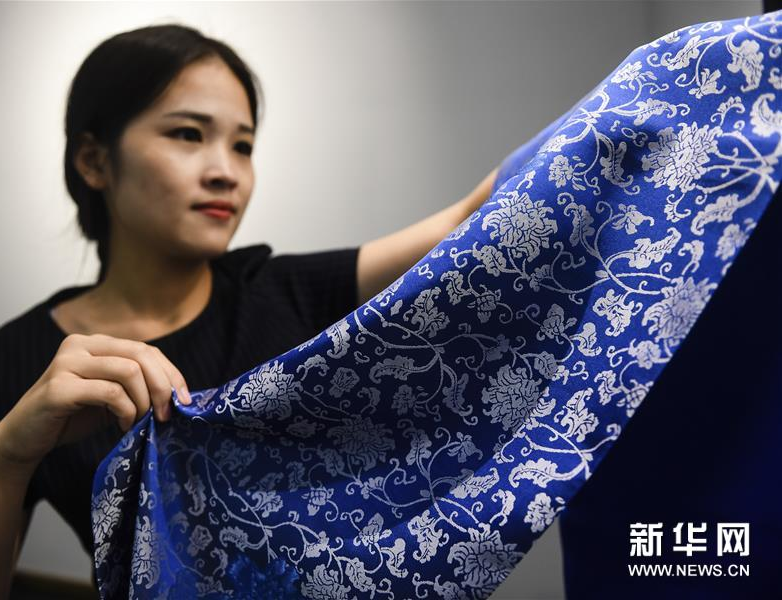
Song Brocade
Song Brocade is a kind of brocade with warp and colorful weft showing the pattern at the same time. It is known as the "three famous brocades" of China together with Shu Brocade in Sichuan Province and Yun Brocade in Nanjing. Compared with Han Brocade and Tang Brocade, Song Brocade has made great breakthroughs and innovation in its organization and artistic style. Hence, the appearance of Song Brocade in particular represented the second milestone in the history of silk handicrafts in China. It boasts great historical, sci-tech, cultural and artistic value. Song Brocade has elegant and exquisite patterns, bright colors, solid but soft texture. Known as the crown jewel of the three major brocades in China, it is often used for painting & calligraphy mounting, matting, decoration, clothing & curtain making. In 2006, Song Brocade was included in China's first batch of state-level intangible cultural heritage items. In September 2009, it was incorporated by UNESCO into the World Intangible Cultural Heritage List.
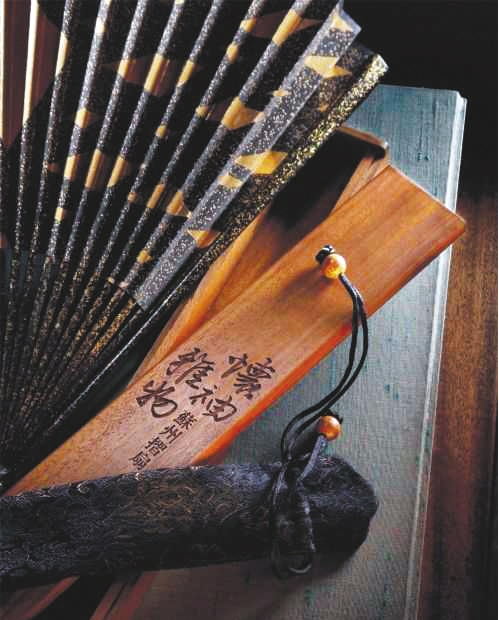
Suzhou Fans
Suzhou Fans are the general name of folding fans, sandalwood fans, silk palace fans and paper fans. Among them, the most famous are folding fans, sandalwood fans and silk palace fans, collectively known as "stylish fans of Suzhou". Combining various exquisite crafts, including modeling, picture-mounting, carving, inlaying and lacquer coating, "stylish fans of Suzhou" feature the images of mountains and landscapes, flowers, birds and figures. The exquisite craftsmanship constitutes a splendid and colorful chapter in the Wu culture. The finest of Suzhou folding fans, known as "literati fans" in the Ming Dynasty, are the vivid reflection of the extensive knowledge and poetic sentiments of the literati. The fans have a reputation of being pure, elegant and pleasing.
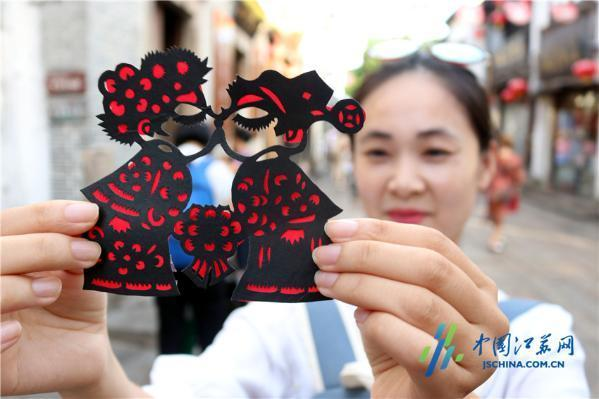
Paper-Cutting
Paper-Cutting belongs to the sixth batch of municipal-level intangible cultural heritage of Suzhou City. It is delicate and beautiful, reflecting the psychology of modern society, the aesthetic needs of the public and the people's aspiration for a better life. Paper-cutting visually gives people a see-through feeling and artistic enjoyment. Paper-cutting can be done using paper, gold and silver foil, bark, leaves, cloth, leather and other flattened materials. In the past, Suzhou Paper-Cutting was widely used in life. It did not only feature fine patterns, but could also be seen as an independent work of art. It could be the "window flower" when pasted on windows, a "gift flower" when placed on the gift, a piece of "door paper" when hung on the lintel, and a "festive flower" on various decorative items when used in weddings. The simple, vivid and intriguing shapes of paper-cutting showcase unique artistic charm.
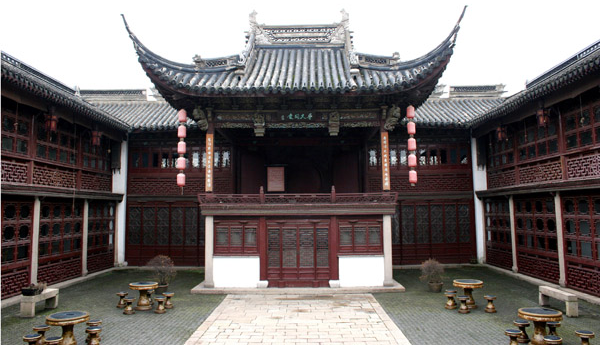
Xiangshan Bang Traditional Architecture Construction Technique
Xiangshan Bang Traditional Architecture Construction Technique is one of China's state-level intangible cultural heritage items and a local traditional handicraft in Suzhou. It is an architectural school that has been inherited all the way from thousands of years ago. Its architecture is characterized by matching colors, compact structure, fine manufacturing and exquisite layout. The Palace Museum in Beijing, the Gardens of Suzhou and other world-famous and exquisite buildings were all made by the artisans of Xiangshan Bang in Suzhou, leaving a glorious episode in the history of Chinese architecture. On May 20, 2006, Xiangshan Bang Traditional Architecture Construction Technique was included in China's first batch of state-level intangible cultural heritage items.
Telling the Stories of Suzhou through Folk Art
Intangible cultural heritage is not an item on display, nor is it a masterpiece laid on a high shelf. It is recognized by the international community not only because of the preservation and inheritance efforts, but also thanks to the continuous development of cultural and creative industries. In recent years, the city has held Suzhou Folk Art Festival, China Suzhou Creative & Design Cultural Industry Expo (CCDE), China (Suzhou) Int'l Fine Arts and Crafts Expo, and the East Asian Folk Craft Exchange Year, etc. As the important role of folk crafts in serving contemporary times and benefiting the people has been enhanced through various characteristic events in Suzhou, the brand effect of Suzhou as the City of Crafts and Folk Art has become more prominent.
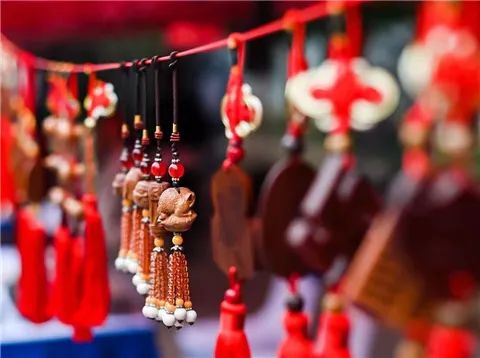
(Photo via China.org.cn)
Founded in 2001, Suzhou Folk Art Festival has already been successfully held for nineteen years. The event is dedicated to integrating folk art into people's daily life, building a cultural exchange and display platform with folk art as the core so as to better inherit and promote excellent folk art in Suzhou and areas around.
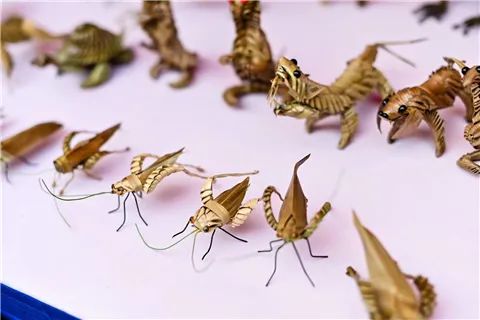
(Photo via China.org.cn)
CCDE is held every year as one of the greatest highlights of the city. It is a national professional fair in the creative & design cultural industry with strong professionalism, high-level openness and strict requirements for demonstration approved by China's Ministry of Culture and Tourism. It highlights the role of the industry in driving overall economic development, enhancing the matchmaking and integration of the industrial economy, and the fundamental role of creative & design talents in promoting the development and prosperity of culture.
On December 24, 2021, China (Suzhou) Int'l Fine Arts and Crafts Expo kicked off, serving as a powerful platform to promote the brand of City of Crafts and Folk Art, Suzhou's craftsmanship and the revitalization and development of Suzhou's traditional arts and crafts. Suzhou Embroidery, K'o-ssu, wood carving and other handicrafts were all on display. The richness of art categories was truly a surprise to many people. Many excellent works of art were also able to shine, and visitors from far and wide were fascinated by the charm of Suzhou's craftsmanship.
In recent years, Suzhou has been continuously exploring its traditional cultural resources, paying extra attention to the inheritance of craftsmanship and talent-cultivating. Moreover, it vigorously leverages cultural exchange platforms to promote the fusion of culture and tourism and explores the new mode of "arts & crafts + Internet + culture + tourism". In this way, intangible cultural heritage projects continue to show their charm in inheritance and development.
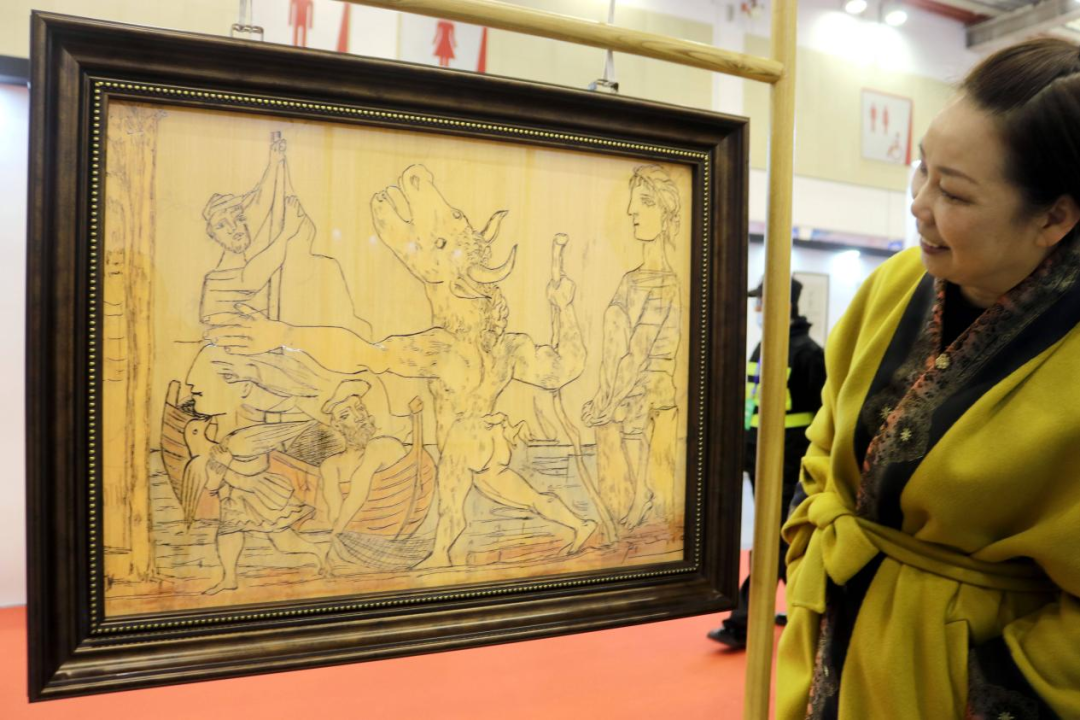
In addition, Suzhou showcases its cultural charm through international exchanges in the field of handicrafts. It held the 2015 East Asian Folk Craft Exchange Year themed on "Creative East Asia, Exquisite Craftsmanship", and successively launched such events as the Suzhou-Jeonju Paper Culture Exchange Programme, Suzhou-Kanazawa Fingertip Culture Exchange Programme, Suzhou Handicraft Touring Exhibition in Japan and South Korea, China-Japan-South Korea Handicraft and Folk Art Youth Exchange Programme, and China-Japan-South Korea University Student Handicraft Creative Exchange Exhibition, to promote exchanges and cooperation among sister cities. This is also one of the important projects to fulfill Suzhou's international commitments and promote international cultural exchanges after it joined the UCCN.
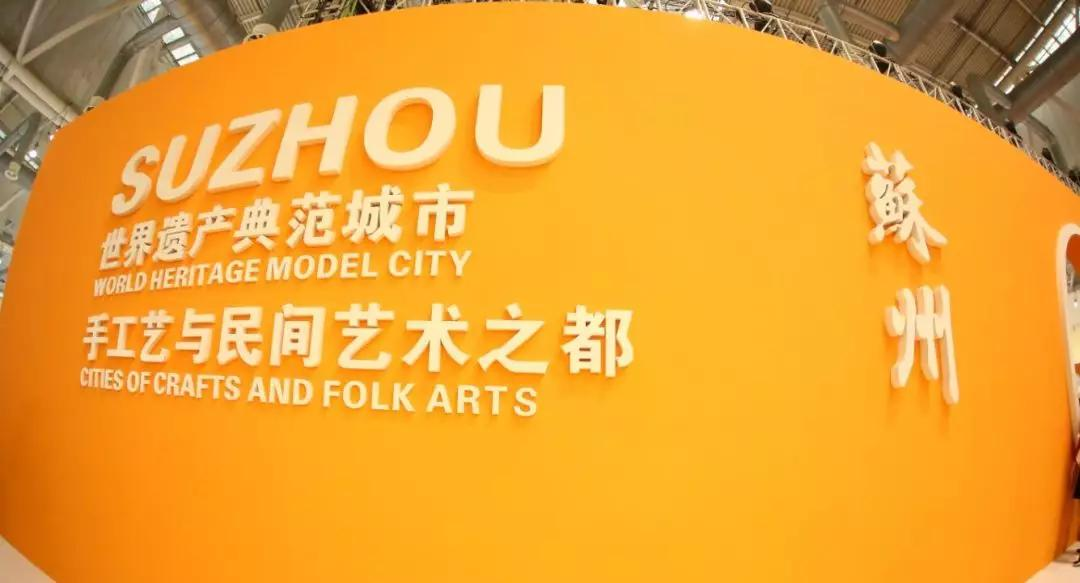
Proper Utilization amid Dynamic Inheritance Injects New Life into Traditional Crafts
In Suzhou, a fan, a silk handkerchief or a piece of Song brocade are all representative of the city. Crafts and works of art, large and small, are independent and exquisite, becoming an integral part of the city's development.

In the process of applying for recognition as the City of Crafts and Folk Art, Suzhou is also renewing people's perceptions. The city is not only doing a good job in heritage preservation, but also focusing on the present and future of crafts and folk art as well as the concept of inclusiveness. With the successful bid for the City of Crafts and Folk Art, the CCDE Organizing Committee signed a contract with Yang Design in Shanghai to officially launch the "New Handicraft Movement" in Suzhou.
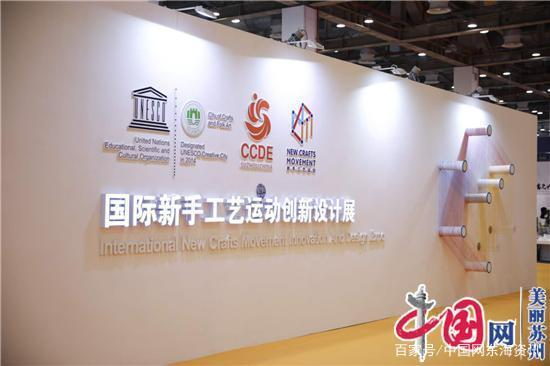
The "New Handicraft Movement" embodies the rediscovery, rethinking and redesign of Suzhou's traditional crafts. The traditional craftsmanship, when combined with contemporary design approaches and brand innovation system, presents innovative products which are integrated into the current aesthetic standards and lifestyles. They help craftsmen and traditional enterprises to expand their market, infuse new life into Suzhou's traditional crafts, and let the development of cultural and creative industries benefit the people.
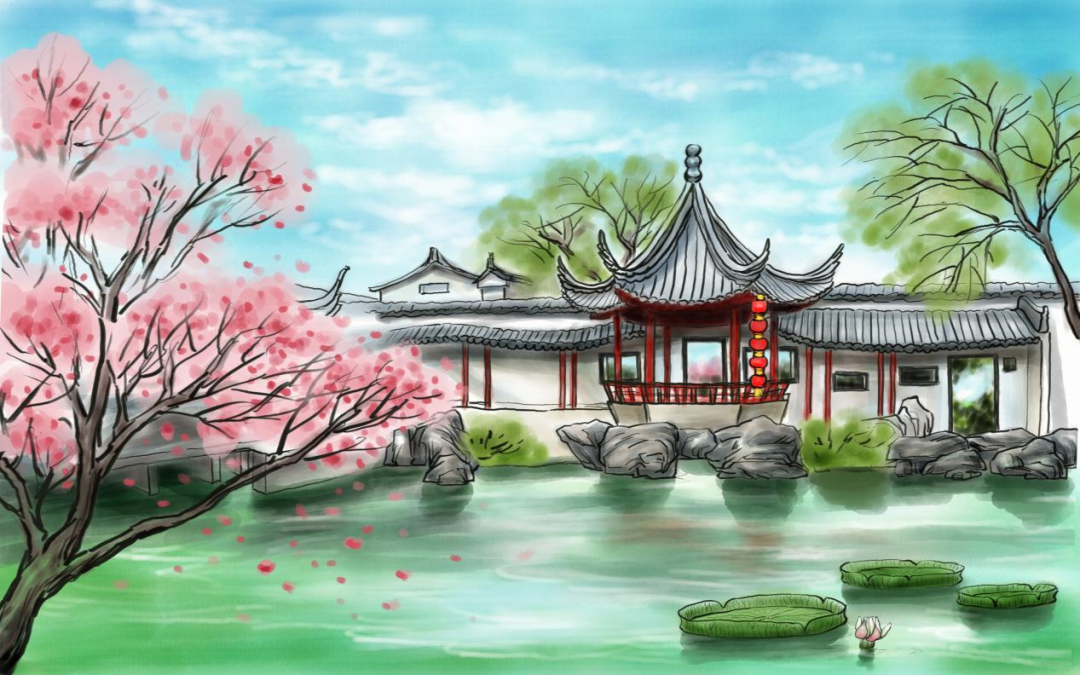
As Suzhou effectively preserve and properly utilize intangible cultural heritage in a dynamic process, the heritage will shine ever more brightly. Today, Suzhou is constantly promoting the high-quality development of crafts, injecting new life into traditional handicrafts with innovation and adding charm to the "City of Crafts and Folk Art". The charm of Suzhou's craftsmanship is thus showcased to the whole world.